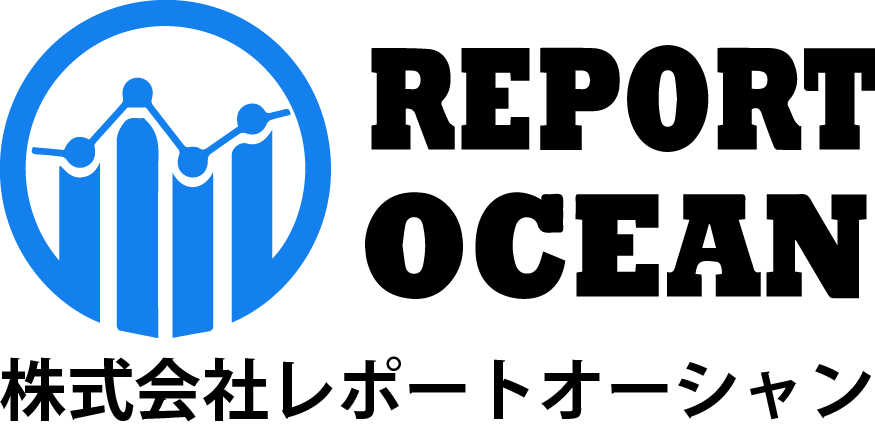日本自動車用エンジンオイル市場規模、シェア、競争環境、トレンド分析レポート:グレード別(鉱物、半合成、完全合成)、エンジンタイプ別(ガソリン、ディーゼル、代替燃料)、車両タイプ別(乗用車、二輪車):2024年から2032年までの機会分析および業界予測
レポートID : ROJP1024287 |
最終更新 : 2024年10月 |
フォーマット : ![]() :
: ![]() :
: ![]()
1 Preface
2 Scope and Methodology
2.1 Objectives of the Study
2.2 Stakeholders
2.3 Data Sources
2.3.1 Primary Sources
2.3.2 Secondary Sources
2.4 Market Estimation
2.4.1 Bottom-Up Approach
2.4.2 Top-Down Approach
2.5 Forecasting Methodology
3 Executive Summary
4 Japan Automotive Engine Oils Market - Introduction
4.1 Overview
4.2 Market Dynamics
4.3 Industry Trends
4.4 Competitive Intelligence
5 Japan Automotive Engine Oils Market Landscape
5.1 Historical and Current Market Trends (2019-2022)
5.2 Market Forecast (2023-2032)
6 Japan Automotive Engine Oils Market - Breakup by Grade
6.1 Mineral
6.1.1 Overview
6.1.2 Historical and Current Market Trends (2019-2022)
6.1.3 Market Forecast (2023-2032)
6.2 Semi-synthetic
6.2.1 Overview
6.2.2 Historical and Current Market Trends (2019-2022)
6.2.3 Market Forecast (2023-2032)
6.3 Fully-synthetic
6.3.1 Overview
6.3.2 Historical and Current Market Trends (2019-2022)
6.3.3 Market Forecast (2023-2032)
7 Japan Automotive Engine Oils Market - Breakup by Engine Type
7.1 Gasoline
7.1.1 Overview
7.1.2 Historical and Current Market Trends (2019-2022)
7.1.3 Market Forecast (2023-2032)
7.2 Diesel
7.2.1 Overview
7.2.2 Historical and Current Market Trends (2019-2022)
7.2.3 Market Forecast (2023-2032)
7.3 Alternative Fuels
7.3.1 Overview
7.3.2 Historical and Current Market Trends (2019-2022)
7.3.3 Market Forecast (2023-2032)
8 Japan Automotive Engine Oils Market - Breakup by Vehicle Type
8.1 Commercial Vehicle
8.1.1 Overview
8.1.2 Historical and Current Market Trends (2019-2022)
8.1.3 Market Forecast (2023-2032)
8.2 Motorcycle
8.2.1 Overview
8.2.2 Historical and Current Market Trends (2019-2022)
8.2.3 Market Forecast (2023-2032)
8.3 Passenger Vehicle
8.3.1 Overview
8.3.2 Historical and Current Market Trends (2019-2022)
8.3.3 Market Forecast (2023-2032)
9 Japan Automotive Engine Oils Market – Breakup by Region
9.1 Kanto Region
9.1.1 Overview
9.1.2 Historical and Current Market Trends (2019-2022)
9.1.3 Market Breakup by Grade
9.1.4 Market Breakup by Engine Type
9.1.5 Market Breakup by Vehicle Type
9.1.6 Key Players
9.1.7 Market Forecast (2023-2032)
9.2 Kansai/Kinki Region
9.2.1 Overview
9.2.2 Historical and Current Market Trends (2019-2022)
9.2.3 Market Breakup by Grade
9.2.4 Market Breakup by Engine Type
9.2.5 Market Breakup by Vehicle Type
9.2.6 Key Players
9.2.7 Market Forecast (2023-2032)
9.3 Central/ Chubu Region
9.3.1 Overview
9.3.2 Historical and Current Market Trends (2019-2022)
9.3.3 Market Breakup by Grade
9.3.4 Market Breakup by Engine Type
9.3.5 Market Breakup by Vehicle Type
9.3.6 Key Players
9.3.7 Market Forecast (2023-2032)
9.4 Kyushu-Okinawa Region
9.4.1 Overview
9.4.2 Historical and Current Market Trends (2019-2022)
9.4.3 Market Breakup by Grade
9.4.4 Market Breakup by Engine Type
9.4.5 Market Breakup by Vehicle Type
9.4.6 Key Players
9.4.7 Market Forecast (2023-2032)
9.5 Tohoku Region
9.5.1 Overview
9.5.2 Historical and Current Market Trends (2019-2022)
9.5.3 Market Breakup by Grade
9.5.4 Market Breakup by Engine Type
9.5.5 Market Breakup by Vehicle Type
9.5.6 Key Players
9.5.7 Market Forecast (2023-2032)
9.6 Chugoku Region
9.6.1 Overview
9.6.2 Historical and Current Market Trends (2019-2022)
9.6.3 Market Breakup by Grade
9.6.4 Market Breakup by Engine Type
9.6.5 Market Breakup by Vehicle Type
9.6.6 Key Players
9.6.7 Market Forecast (2023-2032)
9.7 Hokkaido Region
9.7.1 Overview
9.7.2 Historical and Current Market Trends (2019-2022)
9.7.3 Market Breakup by Grade
9.7.4 Market Breakup by Engine Type
9.7.5 Market Breakup by Vehicle Type
9.7.6 Key Players
9.7.7 Market Forecast (2023-2032)
9.8 Shikoku Region
9.8.1 Overview
9.8.2 Historical and Current Market Trends (2019-2022)
9.8.3 Market Breakup by Grade
9.8.4 Market Breakup by Engine Type
9.8.5 Market Breakup by Vehicle Type
9.8.6 Key Players
9.8.7 Market Forecast (2023-2032)
10 Japan Automotive Engine Oils Market – Competitive Landscape
10.1 Overview
10.2 Market Structure
10.3 Market Player Positioning
10.4 Top Winning Strategies
10.5 Competitive Dashboard
10.6 Company Evaluation Quadrant
11 Profiles of Key Players
11.1 Fuchs Japan Ltd.
11.1.1 Business Overview
11.1.2 Product Portfolio
11.1.3 Business Strategies
11.1.4 SWOT Analysis
11.1.5 Major News and Events
11.2 Japan Sun Oil Company, Ltd.
11.2.1 Business Overview
11.2.2 Product Portfolio
11.2.3 Business Strategies
11.2.4 SWOT Analysis
11.2.5 Major News and Events
11.3 AKT Japan Co. Ltd
11.3.1 Business Overview
11.3.2 Product Portfolio
11.3.3 Business Strategies
11.3.4 SWOT Analysis
11.3.5 Major News and Events
11.4 Motul
11.4.1 Business Overview
11.4.2 Product Portfolio
11.4.3 Business Strategies
11.4.4 SWOT Analysis
11.4.5 Major News and Events
11.5 Cosmo Energy Holdings Co., Ltd.
11.5.1 Business Overview
11.5.2 Product Portfolio
11.5.3 Business Strategies
11.5.4 SWOT Analysis
11.5.5 Major News and Events
11.6 ENEOS Corporation
11.6.1 Business Overview
11.6.2 Product Portfolio
11.6.3 Business Strategies
11.6.4 SWOT Analysis
11.6.5 Major News and Events
11.7 Others
11.7.1 Business Overview
11.7.2 Product Portfolio
11.7.3 Business Strategies
11.7.4 SWOT Analysis
11.7.5 Major News and Events
12 Japan Automotive Engine Oils Market - Industry Analysis
12.1 Drivers, Restraints, and Opportunities
12.1.1 Overview
12.1.2 Drivers
12.1.3 Restraints
12.1.4 Opportunities
12.2 Porters Five Forces Analysis
12.2.1 Overview
12.2.2 Bargaining Power of Buyers
12.2.3 Bargaining Power of Suppliers
12.2.4 Degree of Competition
12.2.5 Threat of New Entrants
12.2.6 Threat of Substitutes
12.3 Value Chain Analysis
13 Appendix
無料サンプルを入手する ![]()
この無料サンプルには、トレンド分析から推定・予測まで、さまざまなデータが含まれています。
最新レポート
お問い合わせ
-
- JAPAN : 03-6899-2648
-
- EMAIL : [email protected]







